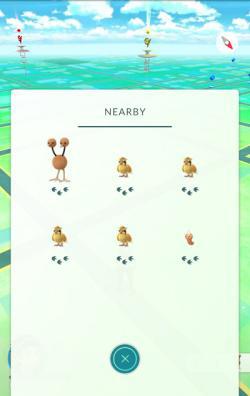Pokémon Go doesn’t appear to have taken off in rural Virginia quite the same way it has in every other corner of the universe. There are no hordes of fledgling Pokémon Masters like Ash Ketchum (protagonist of the immortal Pokémon animated series) crowding around street art or monuments, laughing about things like Pidgeys and PokéGyms. Looking at your smartphone screen, there is no map crowded with landmarks and Lure Modules. There is no one around you chasing his or her iPhone, and if there was, the map would appear mostly empty—just wide open spaces occasionally disrupted by a lonely equestrian statue that dispenses Poké Balls. Playing Pokémon Go is nearly impossible out in the sticks.
After all, how could anyone reasonably play a game that requires walking if the incentivized locations are mostly churches or hard-to-reach roadside statues that you can’t even use, because they’re actually gyms and you’re not Level 5 yet, none of which really matters because they’re on roads that are hazardous to walk on anyway?
On Sunday, four days after Pokémon Go had launched, I was driving up U.S. 1 from Richmond, Virginia, while my passenger played Pokémon Go on both of our phones at once. For a road that runs from Maine to Florida, U.S. 1 gets very narrow in places: Had we attempted to get out and walk between the first Poké Stop we saw outside of Richmond (“Rooftop Teepee” in Glen Allen) and the third (the “Jackson’s March to Mechanicsville” marker in nearby Ashland), it would’ve taken more than an hour (and close to 4 miles) of walking along a sidewalk-less and poorly lit major highway that is also one of the region’s main throughways. Not exactly ideal Pokémon-hunting conditions.

Screenshot via Pokémon Go
In Pokémon Go, Poké Stops are vital for dispensing items and experience points; if there aren’t any nearby, the only way to gain experience is through catching Pokémon. Just as you will only find so many kinds of fauna on farms and in creeks, in Pokémon Go a trip to the country involves encountering a lot of the same pigeon-, insect- and rat-based Pokémon equivalents. For Pokémon Go players who don’t live near cities or denser concentrations of Poké Stops, leveling up in any reasonable timeframe might actually require traveling to an urban center just to catch ‘em all.
Or catching the same three Pokémon over and over and over again.
So, how do you play Pokémon Go in the middle of nowhere?
The game doesn’t work well if you’re moving faster than 20 mph, which might help explain why entrepreneurs are already offering Uber-like services for Pokémon Go players, as Gizmodo reports, but that’s not really an option here. One of Pokémon Go’s greatest attributes is that it’s a get-out-and-walk-there game—much like Ingress, gamemaker Niantic’s other major augmented reality project, which launched in beta in 2012.
As of Tuesday, there are still only a few surefire ways to locate concentrations of Poké Stops and Pokémon Gyms:
- Go to the nearest town, city, college campus, or business park with lots of street art.
- Search spaces like the Pokémon Go subreddit or Facebook for the nearest Pokémon Go group
- Check Ingress’ database of “Portals,” which was used as a basis for Poké Stops and Gyms
Doing the last thing requires downloading a completely different battery-draining GPS game just to access the website, but the site itself is pretty straightforward and can be viewed as an Ingress map or a regular Street View map, with some weird blue and green dots and fields.

Screenshots via Ingress and Pokémon Go
But, you might think, why not just add more landmarks to make the game more inclusive? According to Niantic’s frequently asked questions site for Ingress, that hasn’t been an option since September while the company has focused on “processing the backlog and on designing new and more efficient ways to evaluate Portal submissions and edits.” And after Niantic CEO John Hanke’s interview with Mashable on Sunday, it doesn’t really sound like the ability to suggest new stops or gyms is coming back anytime soon either. That leaves both Ingress and Pokémon Go players with whatever three years of user-driven submissions has yielded—including countless graffiti, sculptures, and street murals in every major city, as well as the Chipotle corporate art near my apartment.
The game will eventually open up trading with other players, which could improve the game for players whose locations haven’t allowed them to build a lot of variety into their Pokédex. Of course, if it requires in-person contact to trade, it’s back to square one unless you and a friend are OK with swapping easy-to-find Rattata, Pidgeys, and Weedles back and forth. Chalk it up as one of the ways augmented reality is still kind of in beta, too. If Ash Ketchum had played Pokémon Go, would he have been able to leave Pallet Town without hitchhiking to Viridian City?
